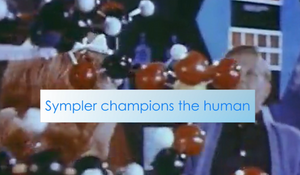Debunking Myth #2 : Technology in qual means scrimping on quality
Research and data have undergone a profound transformation in the last two decades. When you look back to the early aughts the decisions seemed so much more straightforward: simply put, it came down to the extent to which you deployed qual or quant on your task. Typically quant validated and qual opened up new inquiries or exposed your customers’ emotional motivations. Then along came new technologies and environments that brought us choice and efficiencies. In a world where all of our competitors are using these new efficiency-driving tools, we must keep up too, right?
Quant took to tech like a duck to water. Already no stranger to spreadsheets and algorithms, it simply made things easier. Qual however bristled at the suggestion of ‘efficiency,’ ‘speed’ and even ‘scale’. The moment you tidy, rush, or enlarge qual you’re coming for the very elements that make qual successful in the first place. Early forays into tech-enhanced qual were poor substitutes for their full-bodied traditional antecedents. Online focus groups robbed the method of what small quantity of humanity existed. Other attempts did little more than adding open-ended questions to online survey tools.
As a qual researcher from the ‘before-times’, I was the biggest skeptic of what real quality could ever be derived from tech. But that changed when we stopped trying to ‘digitize’ old methods and instead started from the consumer's perspective.
Focus groups were invented in a time before our communications changed beyond recognition, so the patient/therapist model of the IDI or the group therapy model of focus groups were the best ways to generate personal truths. But, what if we were to develop candid, intimate, even vulnerable settings in today’s landscape? Where are today’s most emotionally honest conversations happening? And are they better or worse in ‘quality’?
It was this that led us to the environment of private chat messaging. These spaces were not designed for research but for friendship and bonding. They weren’t designed for broadcast but for intimate dialogue with those we trust. In this space, we were no longer making trade-offs with depth, honesty, and quality; we derived greater emotional candor than we ever found in traditional forums.
Yes, we started with the utmost cynicism. We entered into our early conversations apologetically and rushed through so as not to exhaust or annoy participants. But as we learned about the medium, we realized that speed wasn’t the way forward. We could slow things down. We began asking much longer questions with more projective techniques and found that the longer and messier the questions, the more people would reveal themselves. We changed the flow too. After years of warm-ups to build participant trust, we started dispensing with the small talk and diving right into the deep and the existential. This, in turn, generated more energy and vulnerability.
As we embrace the power of new tech tools while staying true to our core values of depth and authenticity, we found that the most impactful insights emerge when we allow space for messiness, vulnerability, and candid dialogue. As we look ahead, it's clear that the future of research isn't about efficiency alone - it's about connecting in ways that resonate deeply with the human experience.
Related: Debunking Myth #1: IDIs & in-person are the only routes to depth


